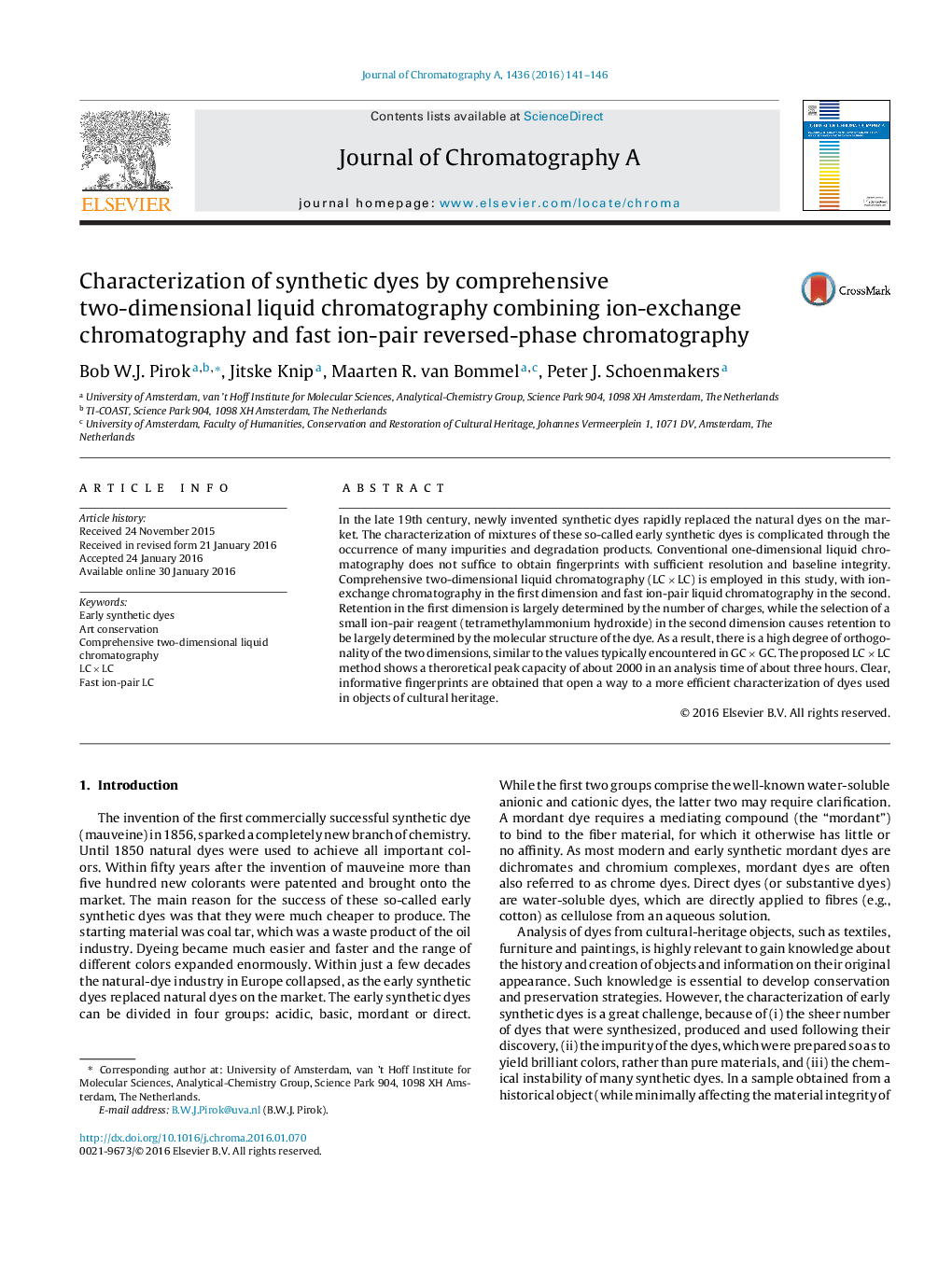| Article ID | Journal | Published Year | Pages | File Type |
|---|---|---|---|---|
| 1198948 | Journal of Chromatography A | 2016 | 6 Pages |
•An LC × LC method for the separation of authentic aged synthetic dyes was developed.•The method relies on the use of a fast ion-pair gradient in the second dimension.•Chemical fingerprints of synthetic dyes and degradation products may be obtained.•Ultimately, the method may lead to guidelines for conservation of art objects.
In the late 19th century, newly invented synthetic dyes rapidly replaced the natural dyes on the market. The characterization of mixtures of these so-called early synthetic dyes is complicated through the occurrence of many impurities and degradation products. Conventional one-dimensional liquid chromatography does not suffice to obtain fingerprints with sufficient resolution and baseline integrity. Comprehensive two-dimensional liquid chromatography (LC × LC) is employed in this study, with ion-exchange chromatography in the first dimension and fast ion-pair liquid chromatography in the second. Retention in the first dimension is largely determined by the number of charges, while the selection of a small ion-pair reagent (tetramethylammonium hydroxide) in the second dimension causes retention to be largely determined by the molecular structure of the dye. As a result, there is a high degree of orthogonality of the two dimensions, similar to the values typically encountered in GC × GC. The proposed LC × LC method shows a theroretical peak capacity of about 2000 in an analysis time of about three hours. Clear, informative fingerprints are obtained that open a way to a more efficient characterization of dyes used in objects of cultural heritage.
